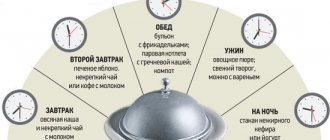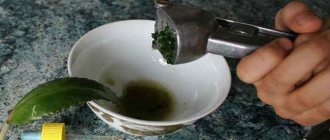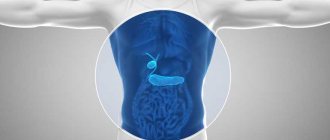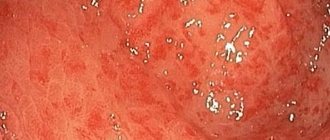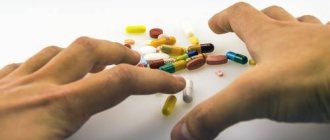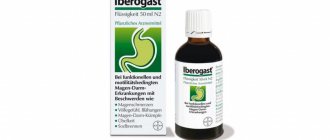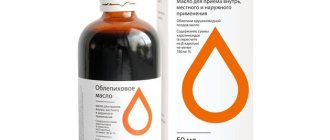Despite the undoubted progress in the treatment of a number of diseases, the issues of preventing their relapses and treating chronic pathologies remain unresolved. Long-term and repeated courses of taking conventional medications lead to the development of resistance of microbial associations and receptors to them, and chronic toxic effects on the body. The gradual depletion of the adaptive capabilities of the human body contributes to the development of a tendency towards chronicity of the pathological process.
In the structure of modern pathology, about 80% are chronic diseases; viral infections predominate; diseases are often combined in nature, characterized by a long, torpid course, and refractoriness to treatment. Adverse reactions from the use of a particular drug in half of the cases require discontinuation of the drug and in a third – treatment of the developed pathology [27].
In connection with the above, therapy is of interest, the fundamental principle of which is to support the functioning of the body’s own biosystem through the use of substances of natural origin and physical factors. This kind of medicine is called biological. Biological medicine considers a person as an integral system and necessarily takes into account the influence of the patient’s environment and lifestyle on the formation of modern pathology. It is most effective for disease prevention, treatment of chronic pathology, rehabilitation after serious illnesses and intensive symptomatic therapy [32].
One of the leading places in naturopathic medicine was occupied by the teaching of the German homeopathic physician Hans-Heinrich Reckeweg (1905–1985) about homotoxins - homotoxicology. Works of Selye, Koch, Krebs, Bertalanffy, Speransky, Ehrlich, Mechnikov, Ricker, Huneke, Hoff, Arndt, Schultz and many others (the main work of H.-H. Reckeweg contains references to the works of more than 450 authors), the personal experience of a doctor and scientist - this is the information and empirical array that has been accumulated and analyzed by Reckeweg for 20 years. To date, the safety and effectiveness of this type of treatment has been confirmed by numerous scientific and clinical studies, incl. multicenter, involving tens of thousands of patients. It is difficult to find a medical specialty that has not defended at least one dissertation that has shown the high effectiveness of such complex drugs [19].
The goals of the therapy: detoxification, regeneration of organs and tissues, correction of impaired processes of self-regulation and self-healing, disease prevention. The means to achieve these goals are antihomotoxic drugs (AGDs). These are complex products made up of components of plant, animal and mineral origin, prepared using special homeopathic technologies. A large number of components that influence almost all parts of the disease and have a positive effect on both the underlying and concomitant pathologies allows the concept of comprehensive, holistic medicine to be realized [1].
By combining AGTP with allopathic drugs, it is possible, firstly, to reduce the dosage of the latter, and secondly, to significantly reduce their side effects. When prescribing AGTP, the doctor has no restrictions related to the patient’s age, pregnancy and breastfeeding, duration of treatment, or taking hormonal and other medications.
The objective of this work is to demonstrate the possibilities of using one of the complex drugs - Mucosa compositum. This is a complex biological preparation, the main ingredients of which (plant, mineral, extracts from healthy mucous membranes of animals) are prepared according to the standards of homeopathic technology (according to the requirements of the German Homeopathic Pharmacopoeia - HAB) in compliance with all GMP (Good Manufacturing Practice) requirements. Mucosa compositum is an officially registered medicinal product, which is a basic remedy for the restoration of mucous membranes (SM).
The normal functioning of CO plays an extremely important role in the life of the body. The main function of this system is to create a protective barrier against damaging factors and opportunistic microorganisms. The leading role in the eradication of pathogenic pathogens and the antiadhesive activity of CO belongs to secretory IgA, which is the main component of the mucosal immune system represented by the lymphoid tissue associated with CO - MALT (mucosa associated lymphoid tissue). In case of primary or secondary immunological deficiency associated with deficiency of secretory IgA, the protective reaction of CO is weakened and conditions are created for recurrent inflammatory processes [12, 28].
Another important mechanism that also ensures the normal functioning of CO is the system of relationships with numerous microflora, which is always present on them to one degree or another. Changes in the composition of microcenoses under the influence of various influences (the use of antibiotics, hormones, diseases of the digestive tract, etc.) lead to violations of many functions of CO: their resistance to colonization by pathogenic microorganisms decreases, metabolism and synthesis of vitamins are disrupted, and antiviral and regulatory actions are lost [28] .
From the above, it is clear why OM diseases (epitheliopathies) are characterized by a recurrent course, the severity of inflammatory reactions of tissues and resistance to various therapeutic effects. To correct these disorders, massive drug therapy is required, which requires long-term use, is often invasive, and is fraught with side effects, allergic and toxic reactions [12]. For example, the use of broad-spectrum antibacterial therapy for inflammatory diseases of the mucous membrane can lead to even greater damage, the development of dysbiosis and antibiotic-associated diarrhea [28]. An alternative can be the use of the drug Mucosa compositum - a means for restoring all functions of the human body.
Structure of the drug
Mucosa compositum is a complex drug created with maximum regard for the principle of synergy applicable in modern pharmacology. The action of such a composite, consisting of biocatalysts, organopreparations and homeopathic remedies (36 components in total), is directed against toxins and the damage caused by them, to activate protective forces and drainage processes, which makes it possible to use it in acute inflammatory, chronic and degenerative diseases [25].
The most numerous group of components of the drug are extracts from the CO of healthy piglets (16 out of 36). Suis-organ components of the drug Mucosa compositum have an organ-specific stimulating effect on the regeneration processes of all COs in the body.
It is necessary to pay attention to the fundamental difference between therapy with potentiated suis-organ components and therapy with whole (living) cells. The latter is considered as therapy with cell implants, which cannot be prescribed for any inflammatory diseases or a tendency to allergic reactions [17].
The remaining components of the drug enhance their regenerating effect, and also have detoxification, mucolytic, secretomotor and anti-inflammatory effects. The detoxifying effect is due to the homeopathic components Sulfur (helps eliminate foci of intoxication and blockade of enzymes in acute and chronic inflammatory processes) and Lachesis mutus (stimulates detoxification in septic conditions, severe inflammatory changes and ulcerations of the mucus).
The antispasmodic effect of the drug Mucosa compositum is due to its components Nux vomica and Momordica balsamina. Kalium bichromicum and Pulsatilla pratensis have mucolytic and secretomotor effects, contribute to the dilution and increase in the amount of secretion, as well as the removal of homotoxins along with it.
The anti-inflammatory effect is exerted by such components as Belladonna, Mandragora radice siccato, Veratrum, especially in the initial period of development of inflammation of the mucous membrane. And with prolonged and chronic processes in CO, other components come to the fore: Argentum nitricum, Hydrastis canadensis and Ceanotus americanus. Natrium oxalaceticum is a biocatalyst that activates the citric acid cycle, redox reactions, and enhances the metabolic effects of suis-organ components.
Particular importance is attached to the presence of the Colibacillinum nosode in the preparation. The immunological effects caused by the nosode (auxiliary immunological reaction [30], production of specific antibodies) are important for increasing local immune defense and general immunological reactivity during infections caused by Escherichia coli, dysbiosis after antibiotic therapy.
Dilutions of individual components of the drug D4-D10 are stimulating and provide an activating effect on the functions of organs and tissues. Dilution D13 occupies an intermediate position and has a moderate stimulating effect.
The immunomodulatory effect is explained in terms of the auxiliary immunological reaction described by H. Heine [30]. The Suis-organ components that make up the drug Mucosa compositum contain potentiated proteins that are close in origin to the tissues of the mucous membrane. These antigens are presented by macrophages and stimulate the production of Th regulatory clones, which take part in an auxiliary immunological reaction through the production of interleukin-4, interleukin-10 and TGF-β. Ultimately, this leads to inhibition of the inflammatory process in the mucus. A model illustrating the effect of complex AGTPs in general and Mucosa compositum in particular can be the phagocytic activity of neutrophils [29].
The drug is administered parenterally. This route ensures independence from food intake, especially in diseases of the digestive system, as well as the rapid creation of a high concentration of the drug directly at the site of the disease. Mucosa compositum can be prescribed in combination with both complex homeopathic preparations and traditional remedies.
Results of using the drug Mucosa compositum
A multicenter study conducted in Germany and Austria demonstrates the results of treatment of 830 patients with diseases of OM of various locations (eyes, upper respiratory tract, digestive tract, urinary tract) using the drug Mucosa compositum. In all groups, high effectiveness of treatment was noted: in 85.6% of cases the result was rated as “very good” and “good”. The drug was well tolerated. The study proves that the drug Mucosa compositum is indicated for the treatment of OM diseases, both as monotherapy and in combination with other drugs [6].
Since 1991, in the works of L.I. Ilyenko discusses the topic of CO lesions in pregnant women and newborns and the possibility of their correction using AGTP, among which Mucosa compositum is in the foreground. The author presents tactics for the treatment of congenital and acquired epitheliopathies (candidiasis, dysbiosis, viral stomatitis, herpes viral lesions). Prescribing the drug Mucosa compositum to pregnant women in combination with the drugs Lymphomyosot and Traumeel S allows, without resorting to antibacterial therapy, to eliminate microorganisms and increase local protection of CO. When treating intestinal dysbiosis in newborns, Mucosa compositum allows one to restore the functional state of the mucus, create favorable conditions for intestinal digestion, the functioning of normal microflora, and increase the “engraftability” of commercial strains of microorganisms [11, 12].
The high safety profile of antihomotoxic therapy is demonstrated by a number of studies on the use of the drug Mucosa compositum in the provision of resuscitation care to newborns. Its use in complex therapy makes it possible to reduce the duration of artificial ventilation, parenteral nutrition, reduce the aggressiveness of pharmacotherapy and the time children spend in the intensive care unit for respiratory failure of newborns with respiratory distress syndrome, meconium aspiration syndrome and necrotizing enterocolitis [7, 24].
The use of the drug Mucosa compositum against the background of standard treatment regimens has made it possible to increase the effectiveness of treatment of inflammatory diseases of the nasopharynx (acute, recurrent, chronic) according to the results of clinical, laboratory, bacteriological, and immunological research methods [5, 9].
The use of AGTP in the treatment of ARVI makes it possible to achieve rapid recovery of patients in the absence of pronounced residual effects of the disease. In addition to the main drug – Mucosa compositum, the drainage drug Lymphomyosot, the anti-inflammatory Traumeel S and the immunomodulating Engystol were used [13].
In dental practice, the treatment of various forms of lichen planus with the drug Mucosa compositum has made it possible to achieve good results and consider this method as an alternative to conventional means [3]. Treatment of oral diseases in children suffering from gastrointestinal disorders using the drug Mucosa compositum in combination with the drugs Ubiquinone compositum and Osteobios increased the effectiveness of therapeutic measures and contributed to the normalization of calcium-phosphorus metabolism [10].
A significant part of the work is devoted to the use of the drug Mucosa compositum in pulmonological practice. The possibility of correcting mucociliary insufficiency in patients with chronic bronchitis was shown. In addition to Mucosa compositum, Lymphomyosot, Traumeel S, and Bronchalis-Hel were prescribed against the background of basic antibacterial therapy. The drugs used had a complex restorative effect on the general condition of the body and the functional characteristics of the CO of the respiratory tract [23].
Normalization of the structure of cell membranes and an increase in the functional activity of bronchial mucosa cells under the influence of the drugs Mucosa compositum and Lymphomyosot were noted in patients with chronic obstructive pulmonary disease. Improvements in immune and hemorheological status, normalization of adaptation mechanisms, restoration of bronchial patency and pulmonary ventilation have been recorded [15]. The use of AGTP Lymphomyosot and Mucosa compositum in the complex treatment of children with recurrent bronchitis and infected with Mycobacterium tuberculosis improved the detoxification process, contributed to shortening the treatment period, reduced the number of relapses of bronchitis, and reduced the risk of developing local tuberculosis [14]. AGTP in combination with probiotics were also used in the treatment of difficult-to-treat allergic diseases in children [8, 26].
The possibility of increasing the effectiveness of treatment of bronchial asthma (BA) in children associated with intracellular infection was studied by including Mucosa compositum, Lymphomyosot, Traumeel S, Echinacea compositum SN in complex therapy. This made it possible to more effectively stop attacks of bronchial obstruction, reduce the manifestations of intoxication syndrome, enhance the mucolytic effect, reduce the doses of allopathic drugs, minimize their side effects and shorten the treatment period [26].
Treatment of chronic urticaria was carried out with the AGTP complex - Mucosa compositum in combination with the drugs Lymphomyosot and Hepel, as well as the microbiological drug Pro-Symbioflor, which increased the effectiveness of therapy, improved indicators of cellular and humoral immunity, and contributed to the correction of microbiological disorders [22].
The complex effect of antihomotoxic therapy simultaneously on different stages of pathogenesis can significantly increase the effectiveness of treatment protocols for diseases of the digestive system. The addition of Mucosa compositum and other antihypertensive agents in various combinations to standard anti-Helicobacter therapy in the treatment of patients with chronic gastritis and gastroesophageal reflux disease promotes faster relief of clinical symptoms and improves the condition of the esophagus and stomach [4, 18]. The use of Mucosa compositum is also recommended after eradication of Helicobacter pylori [21].
The effectiveness of using the combination of Mucosa compositum with the nosode drug Mycox and the anti-inflammatory drug Gastrikumel in restoring intestinal microbiocenosis with candidiasis has been proven [20]. This scheme is included in the algorithm for the biological correction of any variants of dysbiosis [7].
The feasibility of a course of treatment with the drug Mucosa compositum was shown for patients who underwent endoscopic intervention for various clinical forms of intestinal polyposis, which contributed to the prevention of relapses of adenomatous polyps and the occurrence of cancer in older patients [31].
The drug Mucosa compositum also turned out to be effective in preventing adhesions in patients who underwent enucleation of endometrioid ovarian cysts. During the first three days after surgery, the drug was injected into the abdominal cavity, and then intramuscularly up to 10 injections [16].
According to the classical principles of prescribing antihomotoxic therapy, it is advisable to start treatment with drainage drugs, such as Lymphomyosot, Galium-Hel. Then, depending on the duration and severity of the disease, complex catalysts are used (Coenzyme compositum, Ubiquinone compositum, citric acid cycle catalysts), later - basic (basic) therapy and at the final stage - nosode or suis-organ drugs for complete recovery and regeneration of homologous organs and fabrics. The drug Mucosa compositum, depending on the clinical situation, can solve the problems of primary (basic) therapy or as a suis-organ drug containing a nosode - the tasks of regeneration and restoration, i.e., be used at the final stage of treatment.
Since 2000, the Department of Pediatrics with a course of physical therapy at the State Institution KSMU named after. S.I. Georgievsky under the guidance of Professor N.N. Kaladze is studying the possibilities of using antihomotoxic therapy for common diseases in children at different stages of rehabilitation. A significant place among these studies is occupied by work on the use of the drug Mucosa compositum, which began from the moment of its appearance on the pharmaceutical market.
Acting within the framework of scientific research, guided by the goal of highlighting the effect of prescribing the drug Mucosa compositum, it was prescribed as the only antihomotoxic agent against the background of traditional spa treatment or against the background of basic therapy for patients with various respiratory diseases in children. But because individual components of the composite to a certain extent solve the problems of drainage therapy, eliminate the blockade of enzymes, cause cell regeneration, then in this way the main problems of antihomotoxic therapy were solved.
Own clinical studies
Our own clinical studies allow us to highly evaluate the possibilities of using the drug Mucosa compositum in the treatment of respiratory diseases in children.
One of the works was devoted to the treatment of recurrent bronchitis. Observations were carried out on a group of children (127 people, average age 11.8 years) suffering from recurrent bronchitis and undergoing sanatorium treatment [10]. The results of the initial examination, despite the clinical remission of recurrent bronchitis, revealed residual activity of the inflammatory process in the bronchi with clinical manifestations of the disease, the presence of signs of endotoxemia, impaired immunity (insufficiency of the phagocytic link, T- and B-links of immunity, disimmunoglobulinemia, allergization of the body), decreased function external respiration, mainly of the obstructive type, tension of adaptation systems with the presence of stress reactions.
The examined children were divided into groups comparable in age and course of the disease. In order to carry out endoecological and immunological rehabilitation, the children of the experimental group were prescribed a complex AGTP Mucosa compositum. The course consisted of 5 intramuscular injections of 2.2 ml 2 times a week.
After the course of treatment, children from the experimental group (compared to the control) achieved an improvement in their general condition and a decrease in respiratory symptoms. A significant decrease in the intoxication index was noted, which confirms the detoxification and drainage effects of the drug Mucosa compositum.
In this study, the effect of the drug on the immune system was confirmed by positive significant changes in the values of the main indicators of immunity: T-lymphocytes, their most important subpopulation of T-helpers, the immunoregulatory index, which play a significant role in maintaining the immune response, the level of B-lymphocytes and the IgA and IgG they produce. Under the influence of the course of the drug Mucosa compositum, all initially reduced indicators of nonspecific protection also significantly increased: the percentage of leukocytes participating in phagocytosis, their absorption and digestive ability. This is especially important for achieving regression in the course of the disease, since incomplete phagocytosis leads to the persistence of microorganisms in secondary lysosomes and progression of the disease.
The elimination of respiratory symptoms of the disease (cough, sputum production, catarrhal symptoms) and a significant improvement in the function of external respiration were the result of the elimination of the inflammatory process in the bronchial tree and confirmation of the anti-inflammatory, resolving and regenerating effects of the drug Mucosa compositum.
The examined children were observed for a year after the course of sanatorium-resort treatment, and 6 months from the start of the study, a repeat course of the drug Mucosa compositum was administered, consisting of 3 injections with an interval of 5 days.
Immunological monitoring for a year revealed the persistence of the achieved therapeutic effect: most indicators of nonspecific resistance and specific immunity continued to increase or remained at the achieved level. Clinical observation recorded a decrease in the frequency of exacerbations by 4 times, the duration of exacerbations by 1.67, and an increase in the duration of remission by 2 times.
We studied the possibilities of using the drug Mucosa compositum in the complex treatment of BA in children. The effect of Mucosa compositum was studied not only on the clinical manifestations of the disease, but also on a previously unstudied link in pathogenesis—impaired humoral antiendotoxin immunity [36]. Immunity to endotoxins of gram-negative bacteria is innate and largely determines the formation of adaptive immunity, i.e. main immunological disorders in asthma. We examined 150 children with asthma aged 11 to 15 years and 30 healthy children matched by sex and age (control group). An intermittent course of asthma was diagnosed in 32% of children, a mild persistent course - in 32%, and a moderate persistent course - in 36%. Concomitant diseases of the digestive system were detected in 82% of children, which characterized BA as epitheliopathy.
The main group consisted of 30 children with asthma who, against the background of basic therapy, taking into account a stepwise approach, received Mucosa compositum (10 intramuscular injections of 2.2 ml: 4 injections at intervals of 2 times a week and 6 - 1 time per week; course duration - 8 weeks). The comparison group consisted of 20 children with asthma who received only anti-inflammatory basic therapy according to the severity of asthma.
The positive effect of basic therapy was expressed in a significant improvement in many initially impaired indicators: IgA (p <0.05); IgG (p<0.05); circulating immune complexes (p<0.05); molecules of average mass (p<0.05); vital capacity of the lungs (p<0.05) and some other indicators of external respiration function. At the same time, the observed lack of positive dynamics on the part of anti-endotoxin antibodies was a consequence of persistent endotoxin aggression.
In the main group of children who received the drug Mucosa compositum against the background of basic therapy, after the course of treatment the levels of anti-endotoxin antibodies did not differ significantly from the control group, while most laboratory parameters normalized, except for the IgE level, and indicators of external respiratory function significantly improved. Thus, improvement of the barrier functions of CO in the respiratory and digestive tracts led not only to a decrease in the endotoxin load on the body, but also to the normalization of impaired laboratory and functional parameters. Correlation analysis showed that a violation of antiendotoxin immunity is an important link in the formation of immunological disorders and endogenous intoxication, which confirmed the participation of endotoxin in the pathogenesis of asthma in children. The inclusion of the drug Mucosa compositum as an addition to basic therapy in the interictal period led to optimization of the state of the antibody system specific to Escherichia coli lipopolysaccharide.
It should be noted that by the end of the treatment course, all children in the main group and 66.7% of children in the comparison group achieved clinical remission. A good therapeutic effect persisted for 3 months in all children of the main group and in 70% of children receiving basic therapy. Within 6 months, the therapeutic effect was persistent in 80% of children in the main group and in 55% of children who received only basic therapy. It is important that during 6 months of observation, not a single child in the main group had exacerbations of concomitant diseases of the digestive system.
Thus, the use of the drug Mucosa compositum against the background of basic therapy had a positive effect on the level of anti-endotoxin antibodies and contributed to the restoration of endotoxin binding reserves. This contributed not only to the achievement of asthma remission, but also to an increase in its duration, providing a complex regulatory effect on the body as a whole [33].
Another study is devoted to the use of a complex of antihomotoxic therapy, which included the drug Mucosa compositum, in the immunorehabilitation program for children with asthma (Ametshaeva Z.Z., 2007). When examining children with asthma in remission, it was noted that, despite the absence of clinical symptoms, these patients had pronounced changes in cellular and humoral immunity.
In this regard, an integral part of the rehabilitation of children suffering from asthma during periods of exacerbation and remission was not only the rehabilitation of SB, but also safe immunorehabilitation therapy. In this study, along with standard therapy, we used the drugs Mucosa compositum, Bronchalis-Hel and Lymphomyosot.
In the group of children who received a modified treatment complex, clinical symptoms of bronchial obstruction disappeared earlier, indicators of external respiration function, and patency at the level of small and medium bronchi significantly improved (p<0.05). Studies of cellular humoral immunity also revealed pronounced dynamics in this group of children. Thus, they showed a more pronounced decrease in the number of T-helpers, B-lymphocytes, NK-cells and IgE levels (p<0.05). AGTP therapy led to a more significant increase in growth factor β values in the main group compared to the comparison group. In the main group it increased by 2.33 times, in the comparison group – by 1.62 times. An increase in the level of growth factor had a positive effect on such indicators of sick children as CD8, CD22, the level of active, apoptotic lymphocytes, compared with the comparison group (p <0.05).
A follow-up study showed that with the combined use of the drugs Mucosa compositum, Bronchalis-Hel and Lymphomyosot in children, it was possible to prolong the clinical and immunological remission of the disease. No adverse reactions were identified in any of our studies.
Thus, the results of our own studies allow us to recommend the use of the antihypertensive agent Mucosa compositum against the background of basic therapy for children with bronchopulmonary diseases outside the period of exacerbation, especially in the presence of concomitant diseases of the digestive tract.
